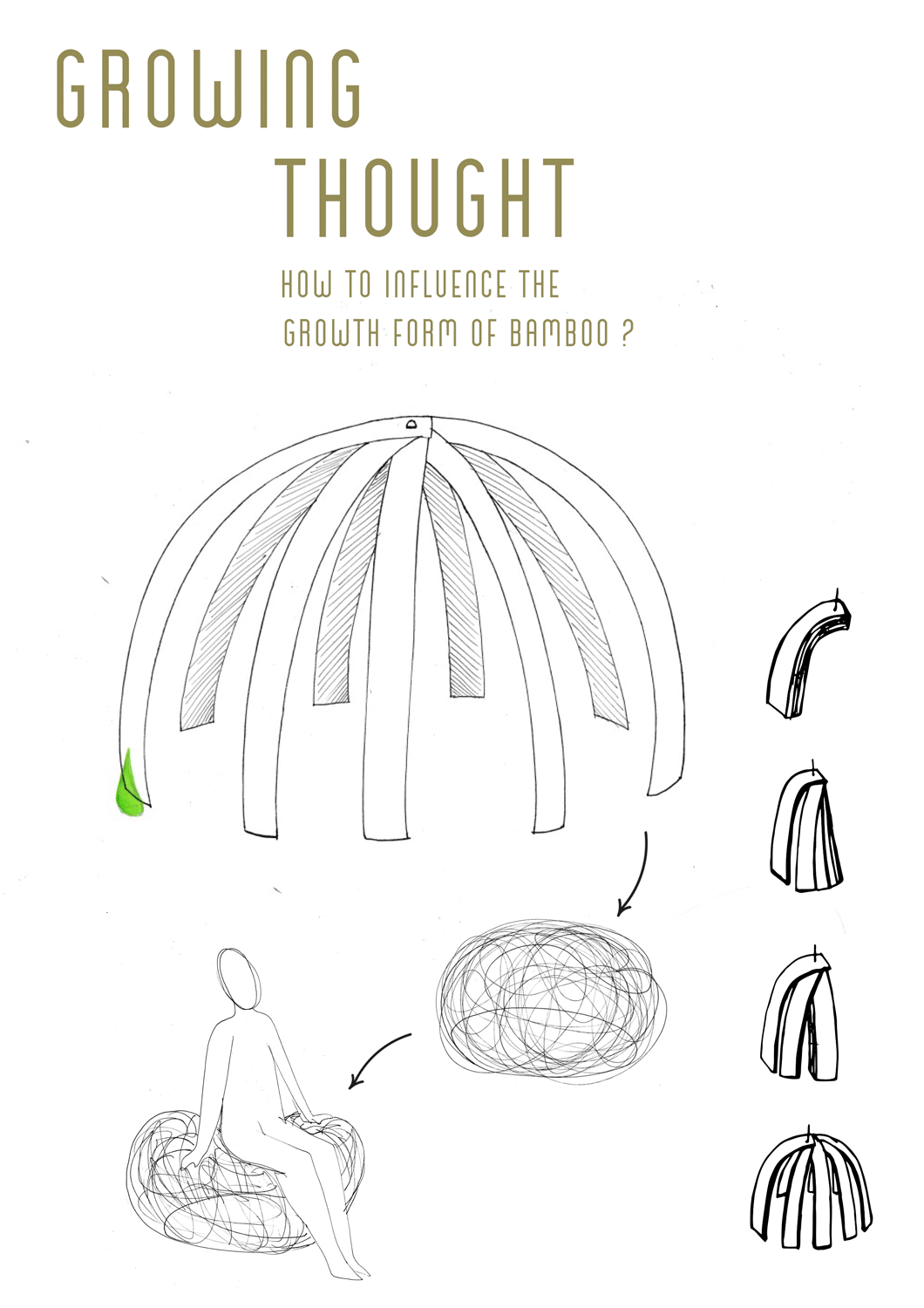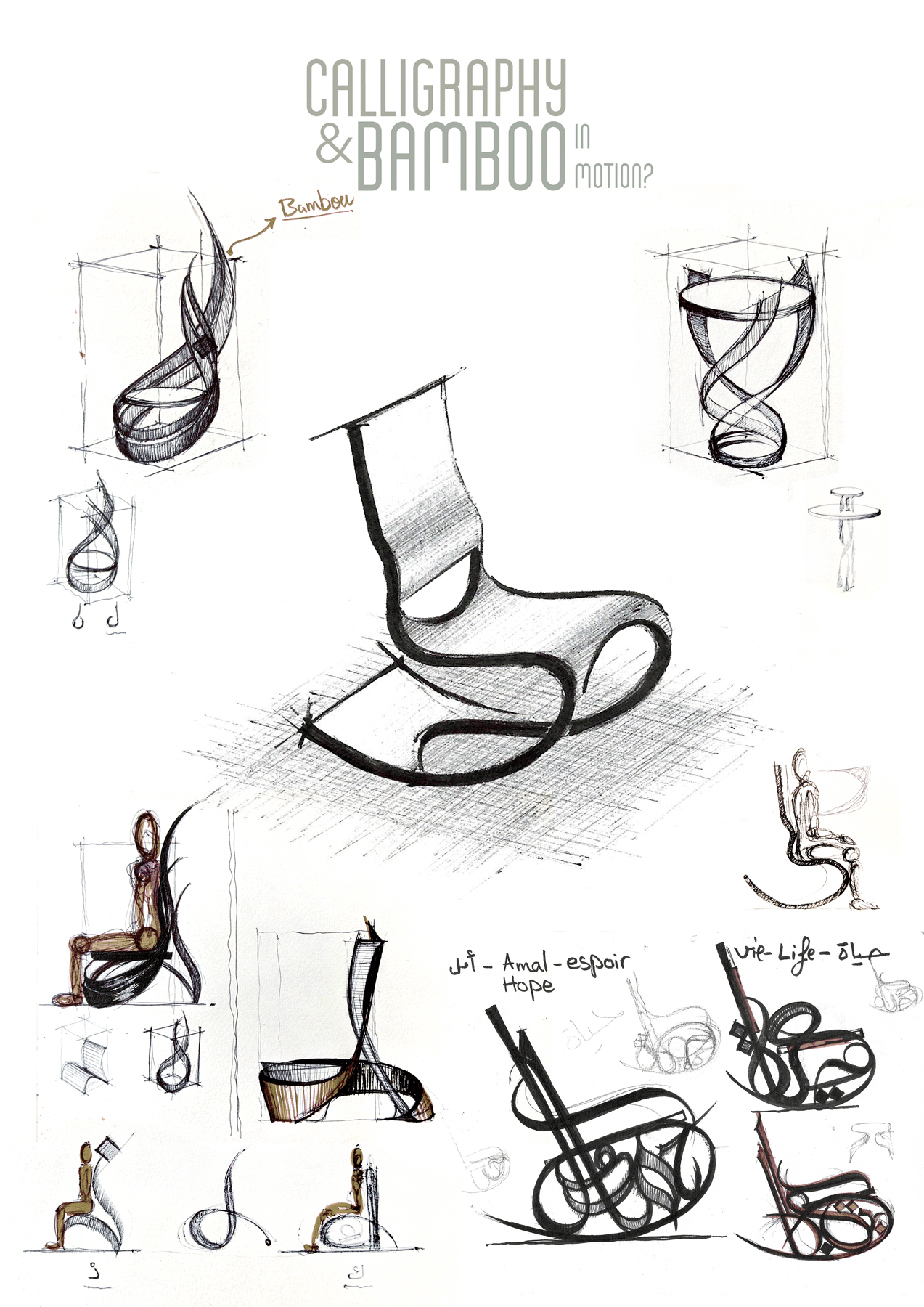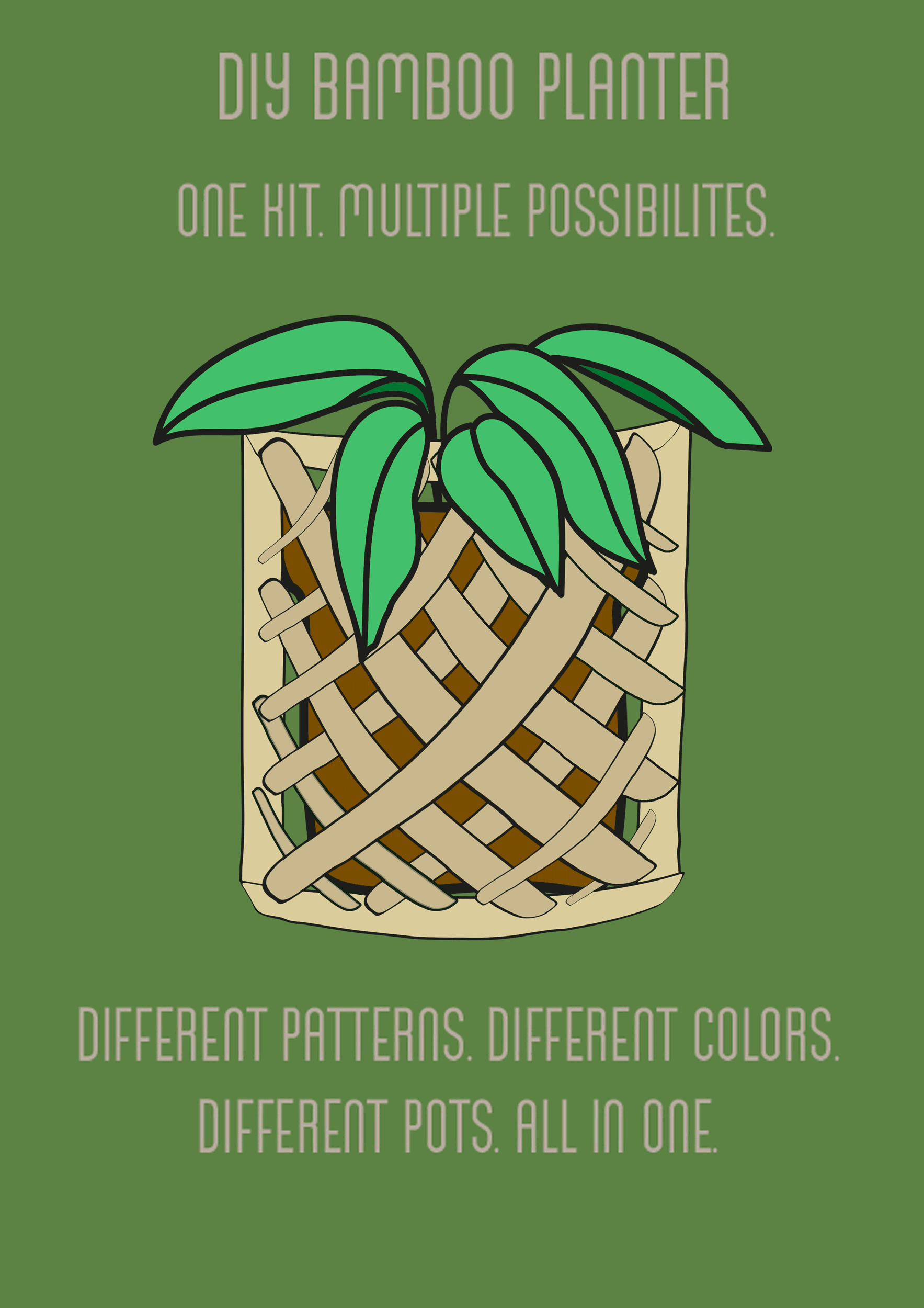Here are texts that explain the research of Callie Charlier, Paul Gauthier, Ayad Abou-Samra and Charlotte Thouvenin in the Air-Bed workshop led by Marc Thebault and Mathew Staunton.
Air-Bed = Atelier d’Initiation à la Recherche – Bambou pour un Environnement Durable.
« Growing Thought »
Bamboo, a material of the future.
Bamboo is a living, ecological and material that grows very quickly. It is widely used in Asia, in the manufacturing of objects, architecture and structures such as scaffolding due to its many technical properties (flexibility, lightness, hardness and solidity…).
However shaping it needs a lot of steps and work to transform the raw material into a finished object. It can also be difficult to assemble because it can easily split and crack in certain conditions.
Starting from these observations I wondered if it was possible to shape bamboo as it grows. By taking advantage of its maleability and the fact that we can almost see it growing, I am trying to answer to the following question: How can we guide nature so that the bamboo grows in the desired direction and shape ?
The idea is to work hand in hand with nature, in harmony and respect.
Callie
« Filtering »
Bamboo has interesting properties that are not sufficiently exploited. It’s not wood but you can bend it, it’s not glass but it contains a lot of silica, it is not metal but we make scaffolding several stories high. It grows very fast. Coming from Asia, it can be found everywhere in France now. There are hundreds of varieties with varying properties. My research began after discovering the filtering and purifying properties of bamboo charcoal.
Accessible and easy to work, how can it be used in a filter device? My research therefore focuses on the different possible filters, on what is filtered, on the supporting structures filtering it how it acts on its environment.
In what forms can bamboo be used as part of a filter device ?
Paul
« Writing in space »
Most of us know calligraphy as a 2D form on paper and on signs, however how can we test its potential in three dimensions?
When I was first introduced to bamboo I was surprised by its high capacity to bend and form different shapes using less energy than bending normal wood. Therefore I started testing how to create furniture using bamboo guided by geometry that is inspired by Arabic calligraphy.
I remember when I was little how I played on my grandma’s bamboo rocking-chair in Damascus, a rocking-chair that until this day is still functioning but a little bit squeaky, it shows the lifespan of a product created with bamboo.
From there my journey to create a minimalist rocking-chair guided by Arabic Calligraphy started, and this is my research.
Ayad
« Weaving a bamboo planter »
If you describe yourself as a ‘plant addict’, you’ve probably run out of planters in which to put your plants, and might not want to spend too much money on them (especially when it could be spent on more plants !) You’ve looked at hundreds of beautiful ceramic planters that you didn’t buy because they were too expensive. You then turned to plastic planters, cheaper, yes, but uglier as well. Not to mention, not sustainable.
The DIY Bamboo Planter kit would be a solution to that: bamboo is a cheap and sustainable material, which can be used, bent and shaped in many different ways. In the kit, you would find a planter frame and a number of bamboo strips that can be assembled on the frame to form different patterns. The bamboo strips would come in different color palettes, either a few shades of the same color, or mixes (inspired for exemple by Mondrian’s paintings).
Charlotte




